Pets and plants are excellent additions to any home – they can provide companionship, relieve stress, and create beauty in your home. Unfortunately, the two don’t always live in harmony, as many plants are poisonous to pets. Although it’s not fun to think about, learning about pet-poisonous and pet-safe plants before you get a pet is important. Otherwise, you may come home to your cat eating mint or parsley without knowing they’re poisonous.
Read on for in-depth lists of indoor and outdoor pet-safe and pet-poisonous plants. Plus, learn what to do if your pet eats any kind of plant — toxic or not. You’ll even find some suggestions for ways to store your plants so that your pets can’t get to them. Whether you live in a micro-apartment in Nashville, TN, or a rental home in Atlanta, GA, these pet-safe plant tips are for you.
Redfin does not provide medical advice. This article is intended for general knowledge only. The lists below only contain plants which are toxic and non-toxic to the two most common pets: cats and dogs. For more complete information, check the ASPCA website. Also, keep in mind that every animal is different. If you ever notice your pet in distress, take the necessary steps to ensure their wellbeing.
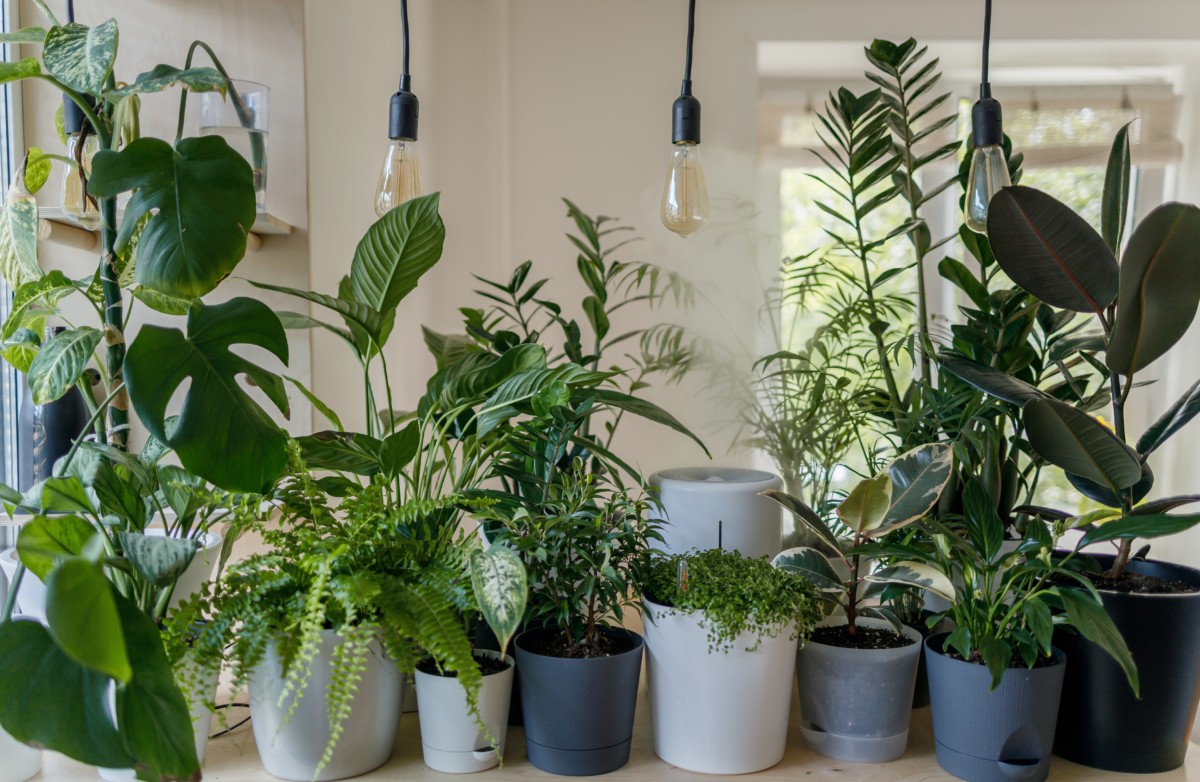
Understanding how plant toxicity works
Living in an apartment or house often doesn’t allow for a lot of space between your animals and greenery. If your cat or dog does eat a plant, it’s important to understand that the toxicity of any plant depends on which part and how much of the plant your pet ate. For example, all parts of a sago palm are poisonous, but only apple trees (not the fruit) are toxic.
Erin Marino from The Sill, a renowned nationwide plant company, notes that plant toxicity is natural. “It’s a natural chemical process designed to ward off predators,” she says. “Many parts of the plant can be toxic, from the plant’s tissue to its sap, flowers, and roots.”
Meanwhile, your pet’s reaction to toxicity depends on how much of a plant they ate. If your pet nibbled a few bites of a carrot, they’ll probably be fine. However, if they took down a whole row of carrots in your balcony garden, they may need medical attention. Understanding how much and what parts of a plant your pet ate is important to their safety.
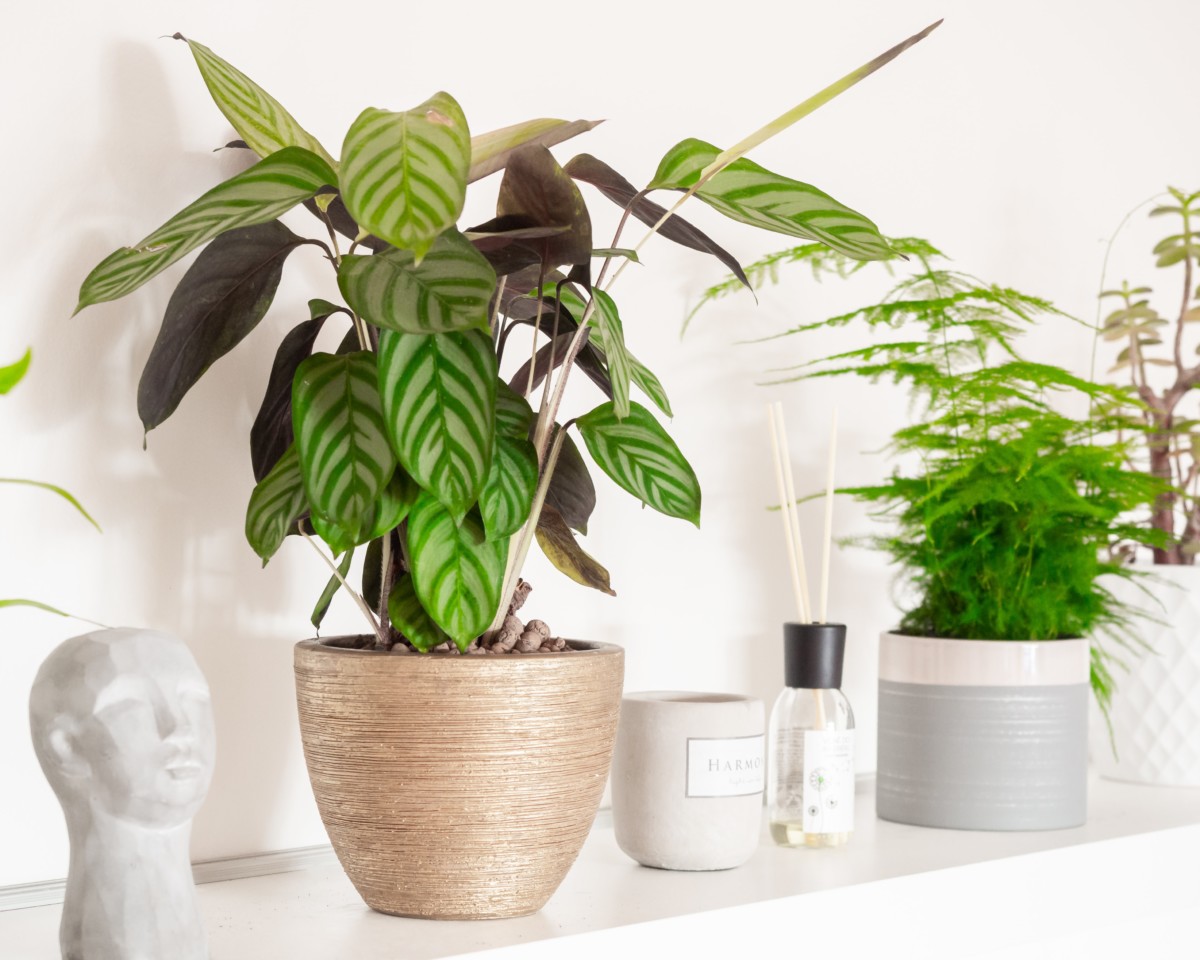
Non-poisonous plants for pets
If grown at home without pesticides, the following plants don’t contain any chemicals known to harm cats or dogs. This list contains the most common non-toxic plants, but is not complete:
|
Non-Poisonous Plants |
||
|
African violet |
Alyssum |
Baby’s breath |
|
Baby’s tears |
Bamboo |
Basil |
|
Broccoli |
Bromeliads |
Calatheas |
|
Camellias |
Catnip |
Cast iron plant |
|
Cauliflower |
Christmas cactus |
Cilantro |
|
Cornflowers |
Dill |
Echeveria |
|
Fennel |
Friendship plant |
Gasterias |
|
Haworthias |
Hens & chicks |
Hoyas |
|
Kale |
Lettuce plants |
Marantas (prayer plants) |
|
Marigolds |
Money plant |
Orchids |
|
Peperomias |
Petunias |
Pileas |
|
Pitcher plant |
Polka dot plant |
Rosemary |
|
Roses |
Sage |
Savory |
|
Snapdragons |
Spider plant |
Sunflowers |
|
True ferns (boston, etc.) |
Turmeric |
Wheatgrass |
|
Venus fly trap |
Zinnias |
Zucchini |
In general, never encourage your pet to eat your plants, regardless of how safe it is; you never know how they will react. Debra Lee Baldwin, author and succulent plant expert with a website that details 10 toxic succulents for pets, implores you to know the name of your plants. “This is especially important if you’re worried your pet ate one of the plants, as the veterinary professional will need to know the name of the plant.”
Pro-tip: every pet is unique
“It’s best to keep your pets from chewing on any plants, even pet-friendly ones,” says Lisa Steinkopf from The Houseplant Guru. “Every pet is unique, and it may affect them differently.”
Non-poisonous, but still dangerous plants for pets
Some plants aren’t inherently poisonous but still pose a risk to your pets. Cacti, spider plants, and some air plants, for example, are typically pet-safe. However, they often contain dangerously-sharp spines or edges, which can hurt your pet. Unfortunately, some pets are a little too adventurous and may try eating part of a plant’s spines. In general, keep sharp plants out of reach of your pets.
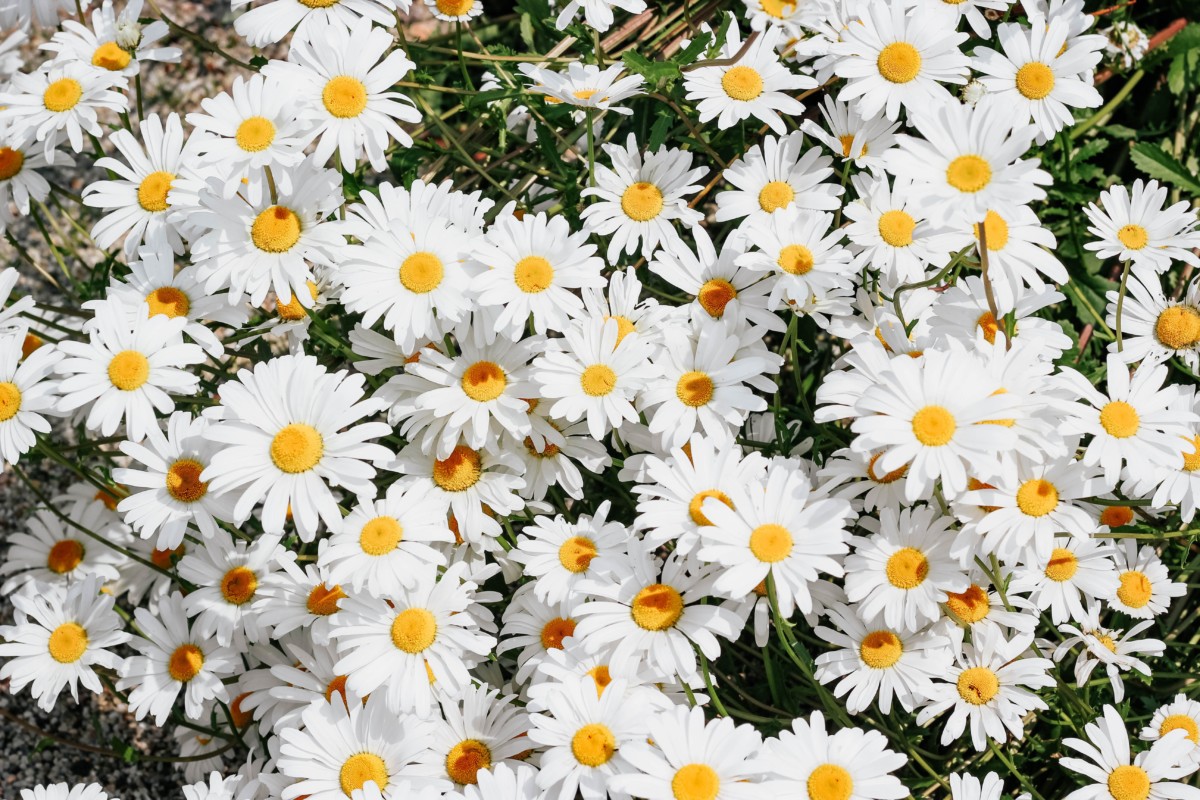
Poisonous plants for pets
As a rule of thumb, many flowering plants and those which grow from a bulb are not pet-friendly. However, there are many others that are toxic as well. Here is a list of the most common poisonous plants for pets:
|
Poisonous Plants |
||
|
Alliums (chives, garlic, leeks, onions, etc.) |
Aloe |
Amaryllis |
|
Apple trees |
Azaleas |
Begonias |
|
Asparagus fern |
Bird of paradise |
Borage |
|
Carnations |
Chrysanthemums |
Citrus & citrus trees |
|
Clover |
Crocuses |
Cyclamen |
|
Daffodils |
Dahlias |
Daisies |
|
Dieffenbacchias (dumb cane) |
Dracaenas (corn plant, etc.) |
Eucalyptus |
|
Fern palm |
Ficus (rubber plant) |
Fig & fig trees |
|
Foxglove |
Gardenia |
Geranium |
|
Hemlock |
Holly |
Hops |
|
Hostas |
Hyacinth |
Hydrangeas |
|
Irises |
Ivy |
Jade plant |
|
Juniper |
Kalanchoe |
Larkspur |
|
Lavender |
Lemon balm |
Lemongrass |
|
Lilies |
Lovage |
Mint |
|
Monstera |
Morning glory |
Mother of millions |
|
Mums |
Myrtles |
Octopus tree |
|
Oleander |
Oregano |
Parsley |
|
Peonies |
Philodendrons |
Pothos |
|
Prickly pear cactus |
Primroses |
Rhododendrons |
|
Rhubarb |
Sago palms |
Sansevieria (snake plants) |
|
Skunk cabbage |
Sorrel |
Stone fruit & stone fruit trees (apricots, etc.) |
|
String of bananas (ruby necklace) |
String of pearls |
Tarragon |
|
Tomatoes & tomato plants |
Tulips |
Thyme |
|
Wandering jew |
Wisteria |
Yarrow |
| Yew | Yucca |
ZZ plant |
Keep poisonous plants in a protected area in your home, for example, on a floating shelf, outside, or hung on a wall. Ensure your apartment is organized so you don’t leave plants out in the open.
Pro-tip: be wary of tropical plants
“While there are many tropical plants that are generally safe for pets, steer clear of euphorbia, peace lilies, and alocasia,” says Lee Wiens from the renowned Crimson Horticultural Rarities. “These can cause varying and sometimes fatal health problems.”
Pesticides are usually poisonous to every pet
Pesticides and pets don’t mix. While cats and dogs may react differently to different plants, they have one thing in common: neither should eat any amount of any pesticide or other chemical. This includes compost, fertilizer, fungicide, herbicide, and insecticide.
Although these products help your plants survive, they generally contain concentrated chemicals and nutrients which are harmful to your pet. In general, keep your pets away from recently-treated plants by putting them in separate rooms or moving your plants to the balcony.
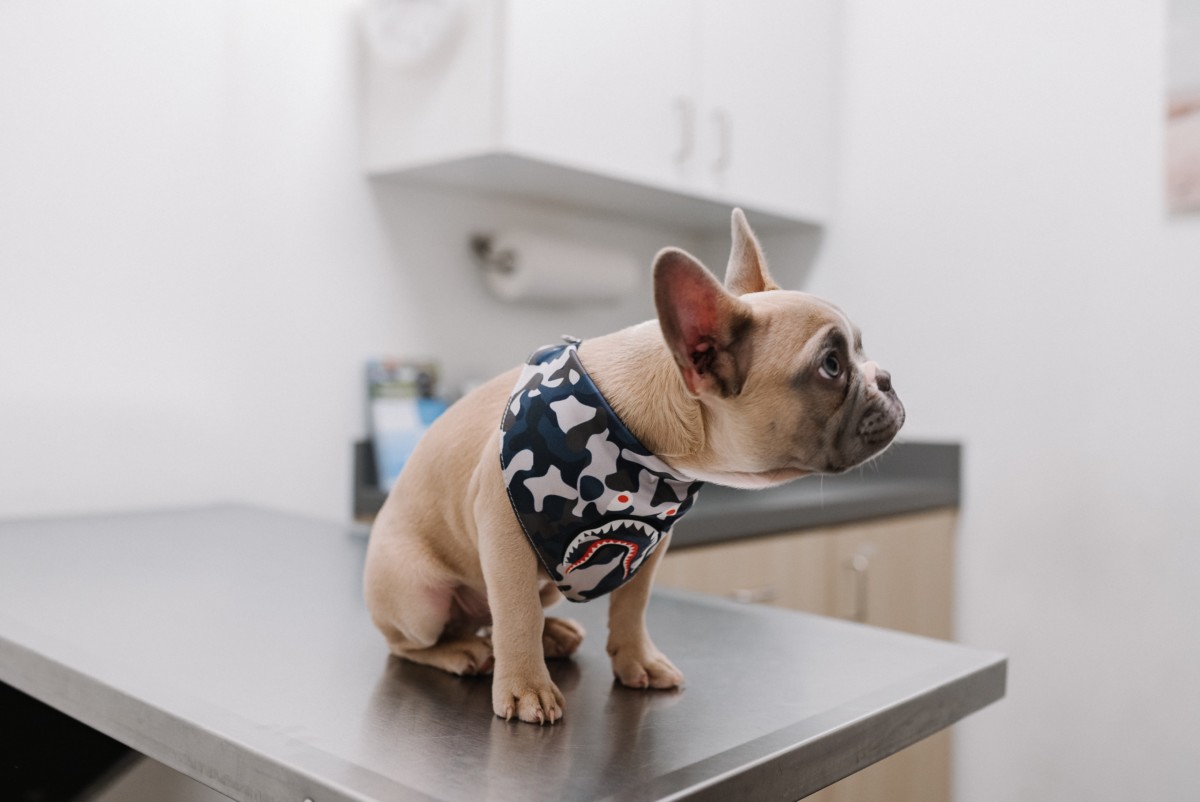
What to do if your pet eats a toxic plant
Whenever your pet eats a plant, especially if you don’t know if it’s pet-safe, it’s essential to monitor them to see how they react. “If you come home from work and discover that your pet knocked over a toxic plant and ate parts of it, call the Animal Poison Control Center (APCC) immediately,” says animal rescuer and Brooklyn interior designer Jarret Yoshida. “They respond quickly, effectively, and completely.” After that, take your pet to the nearest emergency vet immediately. If you can, call the vet on your way and let them know what happened, providing as many specifics as possible. This way, they can prepare for your visit and possibly see you sooner.
If your pet eats a plant late at night, “you can call an emergency vet,” notes Libby and Allis from House Plant Hobbyists. “If you live in the U.S., you can call one of several animal poison control numbers, although it may cost you around $60-65.”
Following a medical emergency, schedule a follow-up visit with your pet’s regular vet as soon as possible. Inform your vet about what happened so they can offer care advice or prescribe medications to support your pet’s recovery.
Keep in mind that delayed reactions are possible
Some poisonous plants cause a delayed reaction in pets – they may not react for a day or two after ingesting the plant. If your pet eats any part of a poisonous plant, monitor them for a few days to make sure they’re okay.
To help avoid possible poisonings, “deworm your pet on a regular basis with a prescribed, adapted dewormer,” says Katalin Pal from Meristem Design. “Also, be sure to choose your plants with care.”
How to protect pets: indoor plants
Whether you live in an apartment full of plants or you have a shelf filled with rare succulents, there are tons of ways to keep your pets safe indoors.
Place plants high up
Keep plants on top of your tallest bookshelves to ensure your pet can’t reach them – hanging air plants are a good option. The team at Houseplantopia suggests using a plant hanger or bookshelf. “Put toxic houseplants out of your pets’ and children’s reach by using an inaccessible and stylish bookcase or shelf.”
Use pet-friendly grass to distract your pets
Christie Pollack from Learn Plant Grow suggests planting grass to keep your pets from poisonous plants. “One trick we use to keep our greenhouse cats happy is planting tasty cat grass in accessible pots. This helps discourage them from eating tropical plants in the greenhouse.”
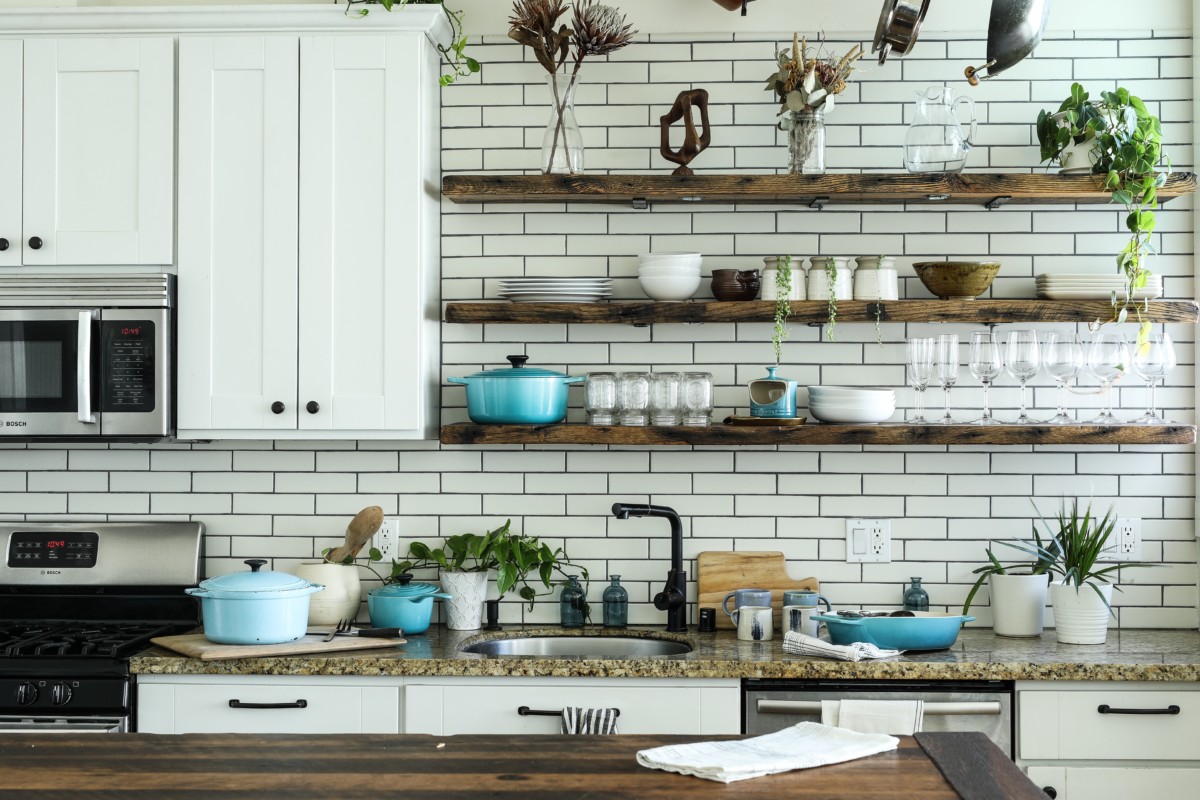
Hang your plants from walls or ceilings
Use floating shelves, crochet and macrame, or other textile hangers to keep plants out of your pet’s reach.
There are many options when using plant hangers. Karen Attwell, Creative Director at Form Interiors, says watertight plant hangers are effective. “Watertight hanging planters are a stylish, contemporary option to separate pets and plants. They also add another layer to your space.”
Stylish hanging plant options
Jennifer Verruto, founder and CEO of Blythe Interiors, believes stylish options are perfect for renters. “The indoor jungle vibe that a hanging houseplant brings to a space is perfect for many renters. Not only will this keep toxic plants safely out of reach, but over time, their long, trailing leaves will create a beautiful, cascading appearance that will delight both you and your guests.”
There are plenty of stylish plant hangers as well. “Wall-mounted planters can be a great solution for keeping plants out of reach from curious pets,” says Kim Lucian of Design Confetti. “Eco-planters are a good option, but you can also opt for the classic macramé hangers.”
Try using pebbles
First, “try to relocate toxic plants to hard-to-reach spaces like wall hangers or tall shelves,” says Sam Saavedra from Pigment. If that still doesn’t work, “try placing a layer of large pebbles on the surface of the soil.”
Opt for terrariums
Joslyn Kipperman, founder of Jos Kipperman Design, believes terrariums are effective. “Terrariums are a great kid- and pet-friendly solution for displaying live plants so you can have a fresh-looking space year-round. Simply add a little water once a month and you’re set.”
Alyson Burleigh, General Manager of North End Organic Nursery, suggests making your own terrarium out of recycled items. “Keep your plants safe from pets by making your own terrarium out of recycled items. Gather recycled glass jars or abandoned aquariums, head to your local nursery to fill them with gravel, soil, or activated charcoal, and add your plants.”
Use large, sturdy plant pots
“Adding a houseplant to your space usually excites your pet. To avoid any accidents, be sure to place your plants in a tall, sturdy plant stand to keep them safely out of reach. For larger animals, move your plants to higher spaces like window ledges, hanging baskets, or a floating shelf.” – Kristi Blok from KIKI Interiors
Spray your plants with citrus water
Most pets don’t like citrus or vinegar, “especially cats,” says Shea Pumarejo, CEO of Younique Designs. “If your cat likes to chew and gnaw, try spraying plant leaves with either a mild detergent or a citrus-based repellent.”
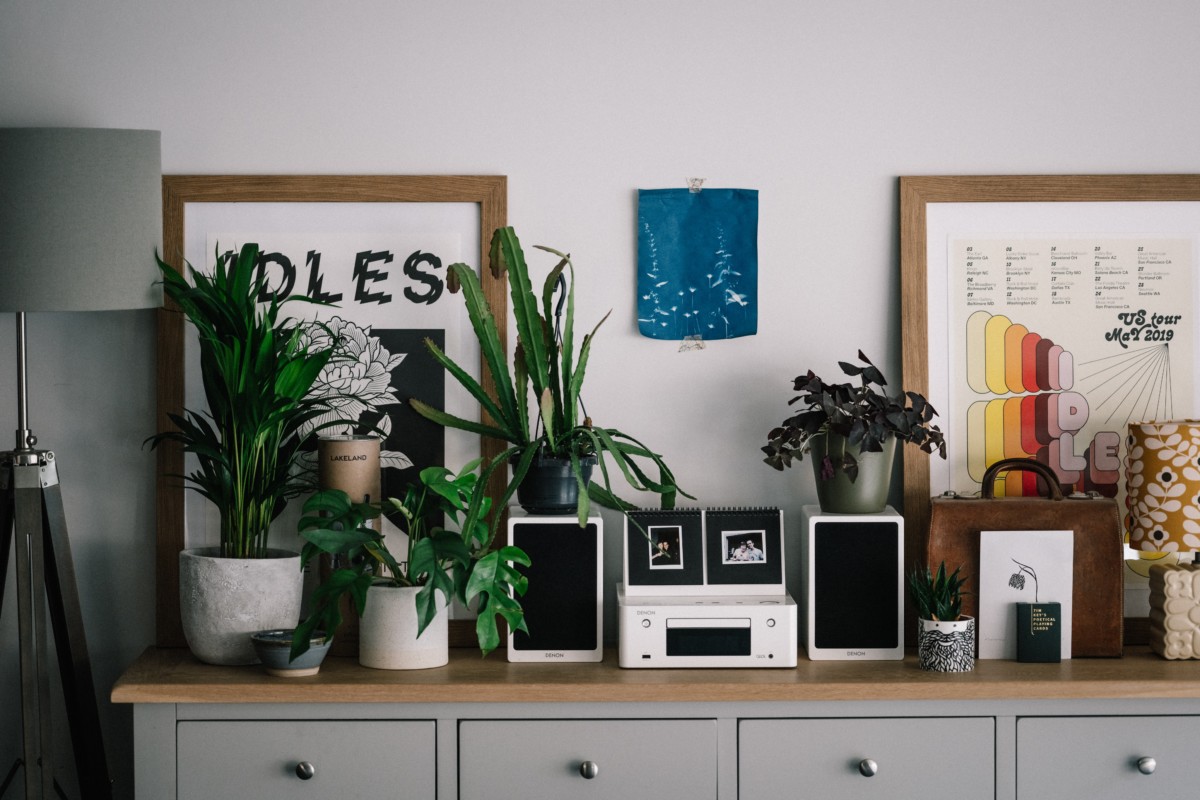
Add plants one by one
To be extra careful, only add plants to your space one by one and “see how your pet reacts to them,” notes Liz Vayda from B.Willow. “Many pets don’t eat anything other than grass-like plants and usually ignore larger varieties.”
Common household items work wonders
John McClain, Founder of John McClain Design, says many common household items can effectively keep your pets away from your plants. “Used coffee grounds, peeled citrus rinds, cayenne pepper, and diluted vinegar are all good options. Just sprinkle, place, or spray these around your plant’s bed soil.”
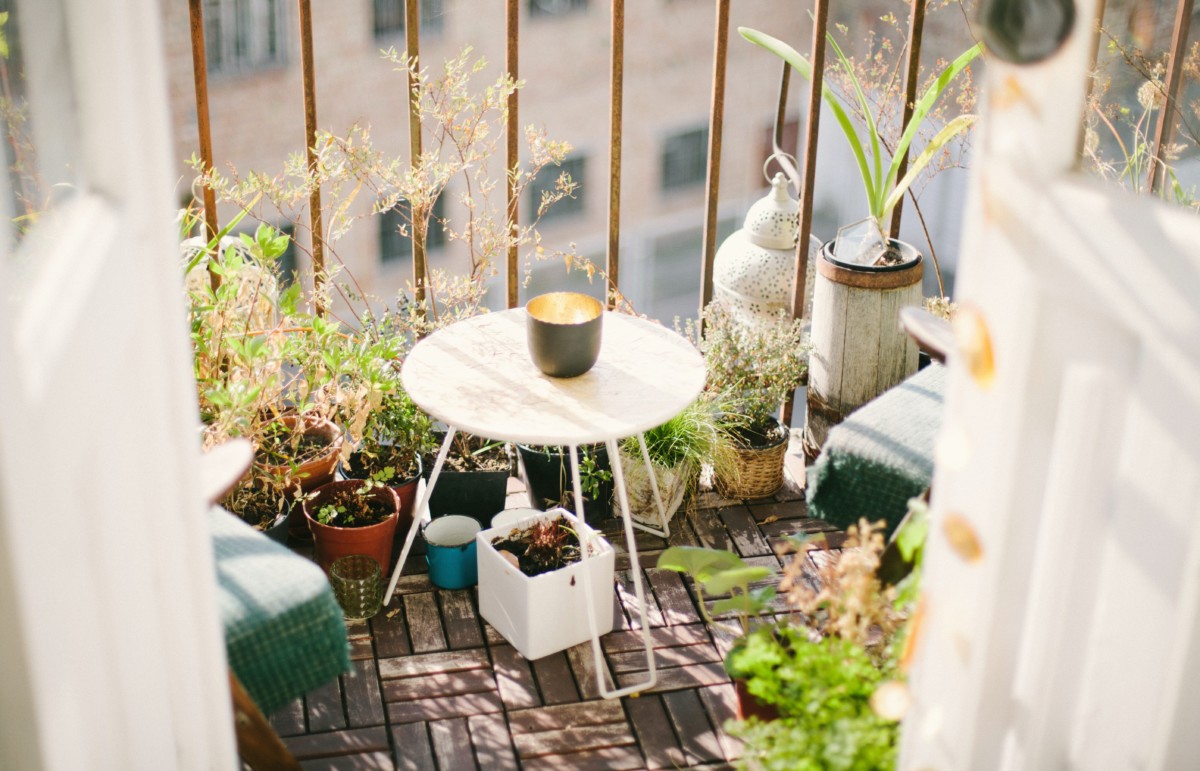
How to protect pets: outdoor plants
If you have a balcony or garden, try to plant it with only pet-safe plants, like catnip, cilantro, and pet-safe vegetables. You can also supervise your pet any time they go outside to make sure they don’t play with the zucchini in the corner.
Keep dangerous plants out of reach
Of course, when you take your cat or dog on walks, try to keep them on the sidewalk, away from the neighbors’ yards. The best thing you can do if you own dangerous plants is to “keep them out of reach from your pets,” says Nga Ngo from Succulents Box. “If you have indoor pets, consider keeping toxic plants outside.” If your cat truly loves the outdoors, you can also build them a catio. That way, they’ll get outside time without the risk of ingesting toxic plants.
Consider not having plants
An obvious and often last-resort choice is to not have plants at all. This is easy to do and is a surefire way to keep your pets healthy, especially if you don’t have a lot of space in your apartment.
If your space is really begging for plants, try using succulents. “They are generally a great choice for almost everyone, including pets,” says Michelle Thomas from Michelle Thomas Design. “Most succulent varieties are pet-friendly and are very easy to care for, even for people with a real black thumb.”
Use faux plants instead
“If you have adventurous pets that like to scale bookcases, your next safest choice is faux,” says Leah Hook from Gray Oak Studio. “Faux plants are becoming less expensive and more authentic looking.”
Mary Brown from One Day Design also suggests faux plants. “Faux plants are a good option. They remove all the risk while still giving you an organic look to your home.”
Whatever your style and climate, there are plenty of ways to keep both your pets and your plants happy and healthy.








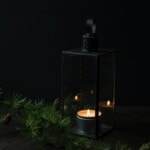



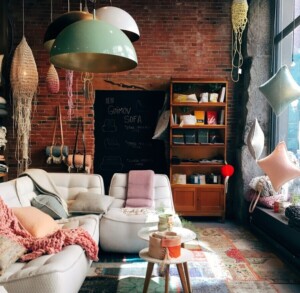
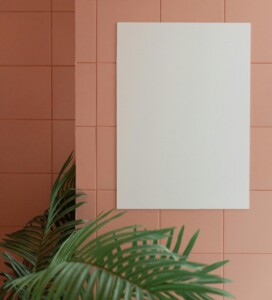
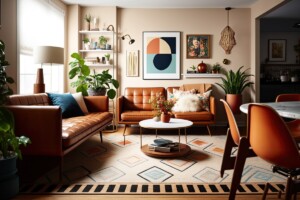












 United States
United States Canada
Canada